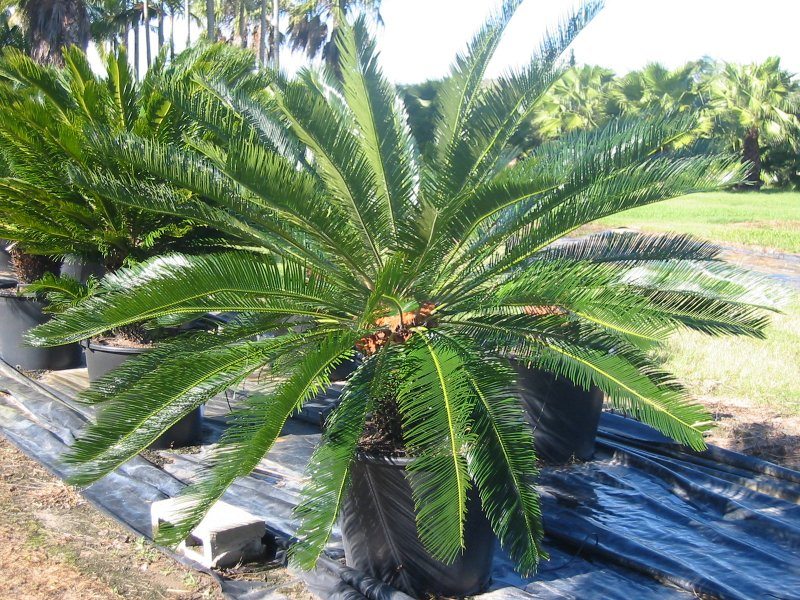by Tom Broome from The Palmateer Vol.IV, 2000
Cycas taitungensis, formerly known as Cycas taiwaniana, was originally described by Carruthers in 1893 and was based on a single specimen in the herbarium of Dr. Henry E. Hance. The only indication of a locality for the specimen was a label marked Formosa. This label was not in the handwriting of the man who collected the specimen. Because the type specimen of C. taiwaniana is housed in England, the taxonomists in Taiwan in the past have not had the chance to compare it with the plants growing in Taiwan. Ken Hill and C.J. Chen have found that the original plant is in a species group allied with C hainenensis, and comes from main land China. The plants that live on Taiwan are closely related to C. revolula. According to the rules of nomenclature, the name of the main land China plant is named Cycas taiwaniana and the name of the plants from Taiwan are called Cycas taitungensis. The main locality is in the Lu-yeh Valley, 19 km. northwest of Taitung City. This 300 hectare (741 acres) area has been turned into a nature reserve to protect the plants.
Cycas taitungensis is closely related to Cycas revoluta, but does not have leaflets with revolute (rolled back) margins. The leaf spread averages around ten feet wide, and has a reddish-brown fuzz on the stem apex. Cycas revoluta has on the average, a six foot leaf span, with more of a dark brown color to the stem. Both plants are very cold hardy. Tests have shown that the stems of the Taiwan cycad are more cold hardy, but the leaves are less frost tolerant than those of C. revoluta. One cycad owner, who lives in the panhandle of Florida, planted a colony several years ago. When a hurricane went though a few of years back, the entire colony was covered with two feet of salt water for three days, and no obvious damage has been seen, even after many years.
If grown in the proper conditions C. taitungensis has to be the fastest growing cycad in the world. First it is essential to grow these plants in full sun for fast growth. I have seen ten year old plants growing in the shade with no more than 4 inches of trunk. The owners say that these plants produce leaves once every other year. The second and most important trick is to realize that these plants crave fertilizer, more than any other cycad I have grown. When a high nitrogen fertilizer is applied three to four times a year, you can expect up to six flushes of leaves per year. I have turned a plant with a four inch caudex into a plant with 15 inches of clear trunk in 18 months. I have seen four month old seedlings, planted in the ground in a friend’s nursery. In 4 1/2 years these plants had two feet of clear trunk, and male cones without the help of irrigation. One unique feature about this plant is that it produces leaves in January, unlike most cycads, which do not flush during winter months.
Even though C. taitungensis is considered a rare plant, there are plants on the market. At least ten people in the world have more that 100 plants used for seed production. There is one nursery with more than a thousand female plants producing seeds each year. There are many nurseries selling these plants, and of course, there are usually plants available at the sales.
Cycas taitungensis is a plant that newcomers as well as experts can enjoy. With many cycad species, it’s hard to tell if you are giving them proper care. This species will show even a novice, the results of proper care in a short period of time.
Have a question about cycads? Then check out The Cycad Bulletin Board at Tom Broome’s website, The Cycad Jungle.

